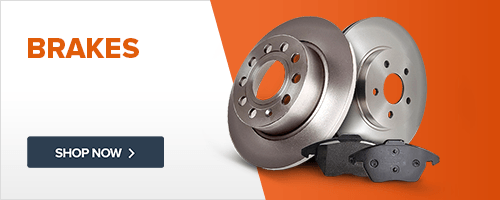A vehicle’s brake pads are fundamental to slowing down your car and keeping yourself safe when driving. As they naturally wear down, it’s important to perform maintenance to keep them in tip top condition.
Whilst brake pads will always be checked as part of vehicle checks by mechanics, they can be changed manually by the driver. Be sure to take absolute care when performing maintenance and request assistance if necessary. Check our range of brake pads and protective gloves at CarParts4Less if you are in need of the correct gear before you start.
Equipment You Need To Change Your Brake Pads:
- Mechanic’s gloves
- Jack and jack stands
- Lug wrench
- C- clamp
- Adjustable wrench
Step 1 – Remove The Wheels
Elevate your car with a car jack on a flat surface and suspend with axle stands. Remove the wheels where you need to change the brake pads.
Step 2 – Remove The Guide Pin Bolt
Use a spanner to hold the guide pin and then unscrew the guide pin bolt. The brake caliper will now swing upwards. Do not disconnect any of the rubber hydraulic lines.
You can now easily inspect the existing brake pads. If the pad is only 1/8 of an inch thick or less, time to get them changed.
Step 3 – Remove The Old Brake Pads
The pads will now easily slide out from their retention clips. Install the new retention clip that came with the pads.
New pads also often come with a packet of grease. Apply this over the new clips to prevent squeaking.
Step 4 – Install The New Pads
Slide in the new pads in place of the old ones. These should fit nicely with the brake grease previously applied.
Step 5 – Monitor Fluid Pressure
Before adjusting the fluid reservoir, check the brake disc for any damage. If you see damage to the disc, this will also need replacing.
The pressure within the brake system will increase as you retract the pistons that push against the brake pads. Remove the top off the fluid reservoir so you can monitor any potential overflowing.
Use a C-clamp to push back the pistons. As you do so, brake fluid will be slowly pushed back into the master reservoir. Install your new brake pads in the space now freed by the retracted pistons.
Step 6 – Reposition The Brake Caliper
The caliper should now slide over your new brake pads. If the fit is not correct, the pistons may have not been fully retracted.
Step 7 – Reinstall The Slider Bolt
All that is left is to reinstall and tighten the slider bolt. Ensure the wheel is straight and reattach the tyre.
Repeat for each brake pad you need to replace. Ensure you test drive your vehicle in safe conditions to identify everything was conducted correctly.
